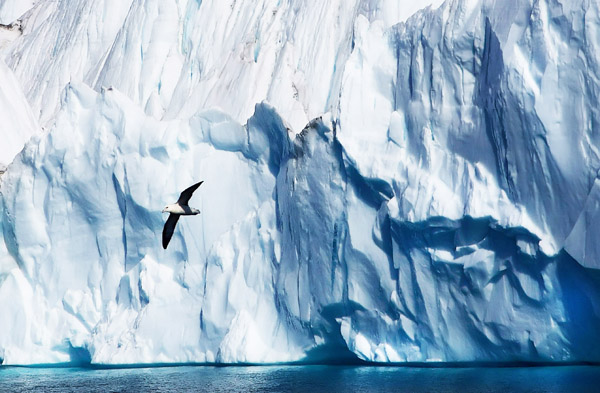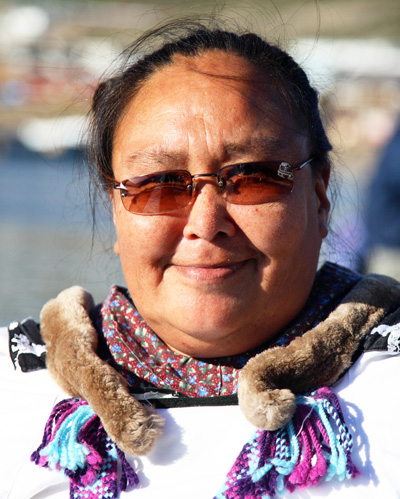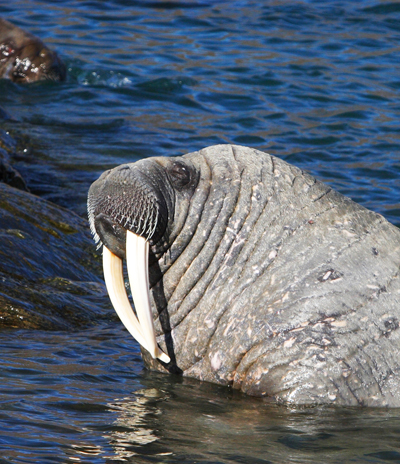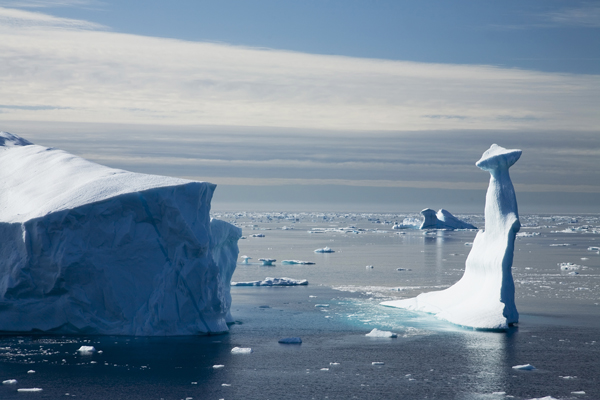IQALUIT, NUNAVUT – Nowhere in the world is quite like Canada’s High Arctic.
I’m reminded of that while looking out across a frozen landscape and seeing my first polar bear — an awesome creature that blends in beautifully with its snowy surroundings.
The king of the Arctic is circling our camp, and while some may feel threatened, I feel privileged. Nowhere else in the world can you see a polar bear except in Canada’s frozen north and the sighting makes the challenging journey to get here well worth the effort.
The High Arctic differs greatly from its southern cousin in many ways, but chief among them is that, unlike Antarctica, Canada’s northern frontier is populated by humans.
The Inuit, the hearty indigenous people who inhabit this harsh but beautiful land of massive mountains, dramatic cliffs, spectacular glaciers and vast stretches of sea ice that blend into the horizon, make you feel so welcome when you arrive, it’s hard to leave.



Left: The sheer beauty and size of Canada’s High Arctic takes your breath away. Middle: The Inuit greet strangers to the north with lovely, warm smiles. Right: The walrus and polar bear are the kings of land and sea in the north.
No one admires or respects the polar bear more than the Inuit. The mighty creature, which the Inuit call “Nanuk” or “lonely hunter,” is the most prized catch for native hunters.
Polar bears also supply the people with many myths and legends. In fact, Inuit legend says that if a dead polar bear is treated properly by the hunter, it will share the good news with other bears so they too will be eager to be killed by the Inuit.
Of course, the polar bear is not the lone predator of the north. Wolves track down muskox and caribou, while millions of migrating birds patrol the rich blue sky searching for easy prey.
The frigid waters of Canada’s High Arctic are filled with whales, seals and a host of other sea creatures and all are honoured by the Inuit in song and ritual.

Above: Adventurers to the High Arctic take to the ice-cold water in kayaks.
Here, days last for almost 24 hours and when darkness does come, the northern lights turn the sky into a natural laser light show that words cannot describe. The snow is so white that you’re forced to wear sun glasses even on cloudy days. Few words can describe the stark beauty of the northern snow – maybe that’s why the Inuit have dozens of words in their language that all mean snow.
My trips to the Arctic have left me with a sense of profound awe. The vast, eerie silence is only matched by the shapes and size of the land.

Above: Nature carves her beauty on land and sea in the High Arctic.
The silence is broken only when we get close to a creeping glacier — the ear-splitting noise this ice giant makes as it inches towards the water is like cannon fire.
When it reaches the water’s edge, huge chunks of ice split off, as if they’ve been sliced by a giant knife, and create a mini tsunami as they fall into the sea. It’s an awesome sight.
In Cambridge Bay, walrus sun themselves on a cloudless day and pose for the stranger with the camera, hamming it up as I crawl closer to them on my stomach.
A visit to Canada’s High Arctic is one of the most rewarding experiences — a trip of a lifetime that leaves you with a lifetime of memories.
About the Author
Camping in -45 degree temperatures to “get the shot” is nothing new to Spencer. His extreme passion for photography has taken him to dynamic Arctic landscapes, including the west coast of Greenland to film calving glaciers and through the Northwest Passage to shoot the vanishing icecaps, polar bears, walrus, caribou and the living conditions of the Inuit people. Wynn says it’s difficult to narrow his favourite locations. "My favourite destinations would have to be the Canadian Arctic, but also many locations in China including Kashgar in the far northwest, the villagers in the high altitudes of western Sichuan and the plunging rice terraces of southern Yunnan."